
Knee and hip replacements are among those clear options. Whether you are a professional athlete like Fred Funk, wanting to play with your grandkids, or merely want to walk through the grocery store without shooting pain, a complete joint replacement could be a viable option to make that come true.
Fred Funk Shares His Experience
Fred Funk’s experience is an example of waiting too long to undergo knee replacement surgery, and he will admit that. While in town for the MitsubishiElectric Classic, also known as the PGA Tour of Champions, he visited the pre-op class for joint replacement patients at Eastside. Fred told about how he had three surgeries that left his knee in a bone-on-bone state before the total joint replacement. In 2008, Fred was at his worst. He played professionally but had to compensate for the increasing pain that his knee caused. With each stroke, Fred contemplated how he could position himself or swing to avoid the worst of the pain. As Fred explained to the pre-op class, “When you have chronic joint pain, the surrounding muscles compensate and shut down. What starts as a knee problem, spreads to surrounding areas. I had shooting pains in my hip because I was trying not to use my knee as much. But after you replace that joint that isn’t working, your body and muscles quickly wake back up. Your muscles start engaging again. I never believed it would be as good as it was after the surgery—I wish I had done it sooner.”
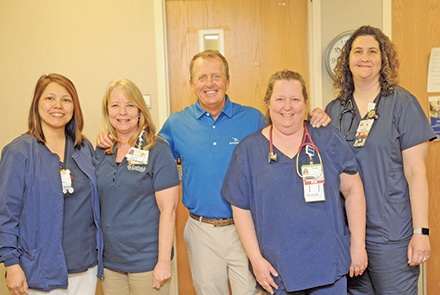
Luckily, the doctors finally found a recipe to fight Fred’s life-threatening infection. After that, he realized he was reaching the end of his options for his knee. It was finally time to move forward with total knee replacement. Amazingly, and with his doctor’s blessing, Fred was back on the golf course hitting balls a mere four weeks after surgery. He went straight to the bunker that day—the place where his pain was the worst before the operation, the place where he faced the most pain before the surgery. Twisting in the soft sand was misery. Fred already knew his body was different before he even stepped foot on the course. As he settled into that bunker shot, he already had a gut feeling that the twisting motion would not be a problem. That gut feeling was spot on, and Chubby Checker himself would have been jealous of Fred’s bunker moves that day.
There are several joint replacement products out there from which to choose. Fred chose a Stryker knee joint product. He is now an ambassador for Stryker and helps spread the word about what Stryker can offer. One of the perks of the Stryker replacement joint is that that part of the surgery involves the Mako robotic arm to help make precision cuts individually measured and tailored to each person.
Joint Destinations— A Unique and Superior Experience
Dr. William Moeller wanted more for his orthopedic patients at Eastside. He knew there was room for improvement, and he had the vision to get there. He gathered his colleagues to structure an entire hospital unit uniformly. Dr. Moeller wanted to standardize care to make it better. All 7-8 doctors who participated in reorganizing the group humbled themselves to a beautifully orchestrated compromise. This team of orthopedic surgeons partnered with the Marshall Steele program to implement best practices in joint replacement surgery at care at Eastside. He and his fellow orthopedic surgeons have an organized procedure from pre-op to discharge. Even beyond that, to both allow for individual preferences of surgeons and also allow the entire department to operate smoothly, with understanding the progress of care for each patient. The general flow of treatment is standardized, but that does not make it impersonal. In fact, this structure gives the medical team more freedom and confidence to help recognize the specific needs of each patient. When you speak with those who have graduated through Joint Destinations with their new knee or hip, you can tell that they went through a superior process and experience than most who undergo the same surgery.
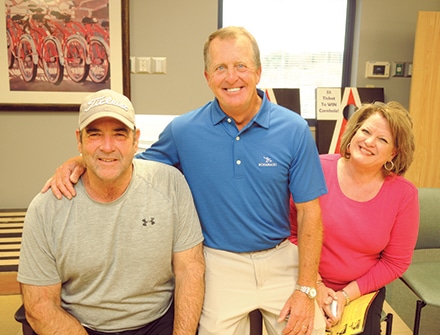
Dr. Moeller performed Tommy’s surgery. When you choose Joint Destinations at Eastside, you have options. The entire medical team at Joint Destinations will ensure an amazing outcome. Speak with your surgeon about which treatment plan and recovery path may be best for you. You are in good hands and have so much to gain, most significantly- moving well again.
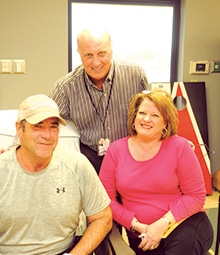
Expectations—they are the ultimate lynchpin for almost everything in life. Unmet expectations ruin relationships and careers. Expectations are the center of every experience. Exceeding expectations can make any experience go from ho-hum to amazing.
When you manage expectations effectively, everyone involved benefits. This concept of managing expectations is at the core of the re-structured procedures at Eastside’s Joint Destinations. Dr. Moeller, Medical Director of the joint replacement program at Eastside, was the spearhead of the changes in the unit. The new spine and joint unit at Eastside is head and shoulders (and hips and knees) above any other option for complete joint replacement. They have better outcomes with higher patient satisfaction than just about anywhere. Their patients get a consistent quality of care at every juncture of the process. The mandatory pre-op class is where every patient receives their realistic expectations. The pre-op course is fundamental to the whole program—no class, no surgery.
When a patient and doctor at Joint Destinations decide that a complete knee or hip replacement is the best option, the pre-op class will be one of the first steps. In this pre-op class, each patient finds out what is standard throughout the process and what might be cause for concern. A personal coach that you may choose will need to be with you. This coach is usually a spouse, close family member, or fantastic friend. However, if you cannot bring a personal coach with you, or if your coach unavoidably cancels, Joint Destinations has volunteer coaches available.
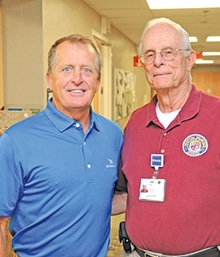
In the pre-op class, you will learn that one expectation is to get out of bed and to move the day of your operation. Yes, that same day. Moving your body quickly after surgery is imperative for optimal healing. Giving this information ahead of time lets each patient wrap their head around that expectation. They also cover how the entire process unfolds. Patients get realistic information.
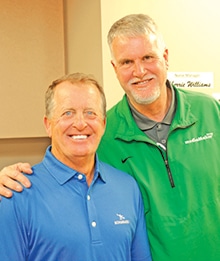
Another important aspect of the Joint Destinations experience is that the unit is self-contained–it is sealed from the rest of the hospital. The staff is exclusive to the unit instead of floating from department to department. These procedures offer two main advantages. First, it reduces spread of infection. With resistant strains becoming a big problem, this approach is precious. The second main advantage is that patients have predictable staff that gives structure, reliability, and comfort. Nothing is more frustrating, especially when recovering from major surgery, than having to start over with someone new at every interaction.
Each orthopedic surgeon has a unique care approach, and all of the surgeons on staff with the Joint Destinations program get fantastic results for their patients.
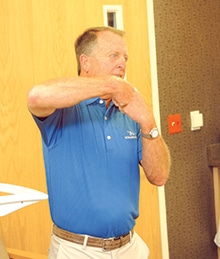
For more information, visit https://eastsidemedical.com/service/total-joint-replacement

